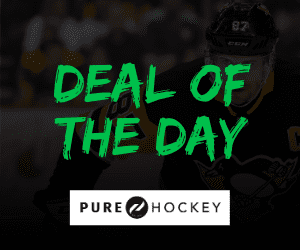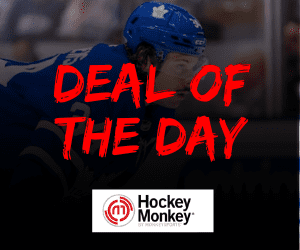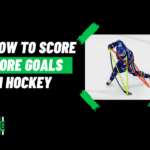Lightning struck the hockey world Thursday morning with the news that the Tampa Bay Lightning would be buying out the contract of long-time captain Vincent Lecavalier. The news followed the Philadelphia Flyers cutting ties with goaltender Ilya Bryzgalov and forward Daniel Briere, and the Montreal Canadiens providing similar treatment to defenseman Tomas Kaberle. As confusion abounds as to the procedure of the buyout, the specifics bear noting. For maximum effect, read this piece while listening to the music from Discovery’s “How It’s Made”.
First, a player that a team wishes to buy out of their contract must usually wait until the appropriate buyout period opens, with an unimportant exception that doesn’t concern us here. The buyout period normally begins two days after the end of the Stanley Cup Final, but not earlier than June 15, and ends on June 30. There is an additional buyout period for teams that had a restricted free agent go to salary arbitration, which opens three days after the team’s last arbitration decision is handed down or the team’s last player slated for arbitration signs an extension, and lasts for two days after opening. So, teams that wish to destroy their relationships with their players by telling an arbitrator how little that player contributes to the team do at least get to further rip their teams apart by casting unsuspecting players out on their faces.
Next, a team must give a player notice that they are going to terminate their contract with a buyout. At that point, or shortly thereafter, they must place the player on “unconditional” waivers. Unconditional waivers, in contrast to regular waivers, cut ties with a player. Once a team has placed a player on unconditional waivers, they cannot decide to keep the player after the player clears; they must terminate the player’s contract through buyout. So, for example, if tomorrow Devils GM Lou Lamoriello experienced a bout of clinical insanity or became possessed by the same xenophobic demon that currently makes its home inside Don Cherry and placed Ilya Kovalchuk on unconditional waivers, a day later, when he returned to sanity or had an exorcism, he would not be able to decide to keep Kovalchuk.
Under the terms of the CBA, the waiver requirement has an added wrinkle for players, like Lecavalier, that have a No-Movement Clause (NMC). While ordinarily a buyout can’t be effectuated without a player being placed on unconditional waivers, as noted above, a player with a NMC can’t be placed on waivers without their consent. In respect for players that manage to strong-arm their GM’s into handcuffing themselves to the player’s hockey stick, the CBA requires a team that intends to buy out a player with a NMC to allow the player to choose whether or not to go on waivers before being bought out. The player then has 24 hours to make that decision.
Thus, Tampa Bay General Manager Steve Yzerman must ask Lecavalier if he wants to go on waivers before a buyout. If Lecavalier agrees to be placed on waivers, any team can assert a claim and acquire him under the terms of his current deal. If Lecavalier decides that he doesn’t want to play a game of “which perpetual nonplayoff team will I end up with” and declines to be placed on waivers, Tampa Bay can still buy him out despite not following the general waivers-then buyout procedure.
After the player has cleared waivers, if required, the team can effectuate the buyout, and then inform the NHL Central Registry that the buyout has been completed. The player then becomes an unrestricted free agent. The special rules that attach to compliance buyouts forbid players from rejoining the team that bought them out for one season, whether that is through resigning, trade, or waiver claim.
Players on a contract that is bought out get to recoup some of the value of their contract in the form of checks from their former team. They are paid either 2/3 (if they are over 26) or 1/3 (if they are under 26) of the remaining monetary value of their contract, spread out over twice the remaining years in even installments. For example, Lecavalier was owed $45 million over seven more years. Tampa Bay must pay him not to play for them, and now owes $30 million over the next 14 years, or $2,142,857 annually.
For teams using their compliance buyouts, there is no hit to their salary cap total by cause of the buyout, though they will still have to pay the player their go-away money. The formula for calculating the cap hit to a player that is not bought out on a compliance basis is an accountant’s nightmare. The player is still paid their even installments annually, but the charge to their former team’s salary cap total is different. For years that the player would still have been under contract but for a buyout, the league will subtract the amount of the player’s annual play-somewhere-else check from the salary that a player was originally due to receive in a given year to find a “Buy-Out Savings”. They will then subtract this amount from the player’s original cap hit and apply it as the player’s new one.
If, for example, Yzerman missed the memo about the compliance buyouts and used a regular buyout on Lecavalier instead, Vinny’s “Buy-Out Savings” next year would be $10,000,000 (the salary he was actually owed) minus $2,142,857 (his annual collection of bad contract tax), or $7,857,143. His cap hit under the terms of his contract was $7,727,273. The league would subtract the savings from his cap total, and find that the difference is -$130,000. Because the savings is greater than his original cap hit, the league would apply a $130,000 credit to Tampa Bay’s cap total. In this example, while Lightning owner Jeff Vinik is weeping and setting fire to piles of cash, and Lecavalier is building a jewel encrusted swimming pool with the money that Vinik has to pay him to play for another team, the Bolts will actually have made money as far as their salary cap space is concerned. In the years where a player’s salary isn’t quite as high, the savings would obviously be less than the cap hit, and the difference would turn into good old-fashioned dead cap space. After the original contract is over, the cap penalty is only the amount that the player is being paid because of the buyout, i.e. the $2,142,857.
The rules for buying out a player’s contract can be fairly complex; the important things to remember are that the player becomes an unrestricted free agent, is still collecting a paycheck from his former team, and, if he has a NMC, does not have to go on waivers before he is bought out. With compliance buyouts likely being the norm for the next two offseasons, the method for calculating cap charges to the team isn’t all that important; the take-home is that while teams are getting the cap-charge free contract amnesty they desired, the players, despite upheaval in their personal lives, do get a parting gift in the form of two-for-one paydays.
For the truly interested, the NHL Collective Bargaining Agreement can be found here .
Details of Lecavalier’s salary can be found on his Capfriendly page.



